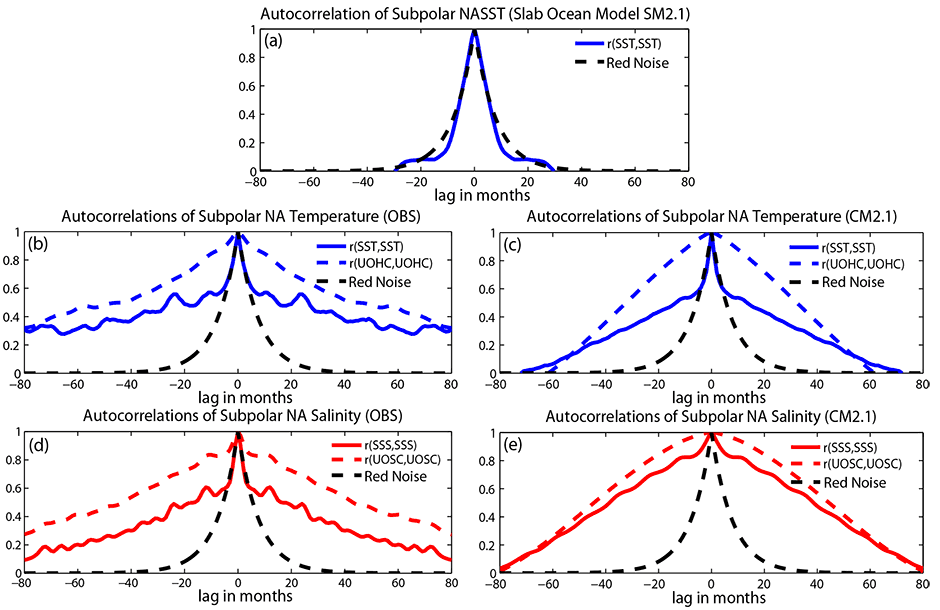August 8th, 2017
Key Findings
- This study identifies key features associated with the Atlantic multidecadal variability (AMV) in both observations and a fully coupled climate model (GFDL’s CM2.1).
- Features seen in both observations and model simulations include decadal persistence of monthly mean subpolar North Atlantic (NA) sea surface temperature (SST) and salinity (SSS) anomalies, and high coherence at low frequency among subpolar NA SST/SSS, upper ocean heat and salt content, and the Atlantic Meridional Overturning Circulation (AMOC) fingerprint.
- These are inconsistent with slab ocean model results or a response forced by atmospheric white noise, but are consistent with the ocean dynamics mechanism (e.g. low frequency AMOC variability).
- Oceanic forcing has a dominant role compared to atmospheric forcing for the low frequency Subpolar NASST anomalies associated with the AMV.
- The decadal persistence of Subpolar NASST anomalies associated with the AMV will lead to much higher decadal prediction skill in the coupled climate model.
Rong Zhang. Geophysical Research Letters. DOI: 10.1002/2017GL074342
The low frequency variability in the North Atlantic Ocean temperature has been shown to exhibit various important climate impacts at global and regional scales. Understanding the physical mechanism for this low frequency variability in the North Atlantic Ocean temperature is crucial for achieving successful future predictions of North Atlantic ocean temperature and the associated climate impacts.
This study identifies key features associated with the Atlantic multidecadal variability (AMV) in both observations and a fully coupled climate model. Some of the key features include decadal persistence of monthly mean subpolar North Atlantic (NA) sea surface temperature (SST) and salinity (SSS) anomalies, and high coherence at low frequency among subpolar NA SST/SSS, upper ocean heat and salt content, and the Atlantic Meridional Overturning Circulation (AMOC) fingerprint. These key AMV features, which can be used to distinguish the AMV mechanism, cannot be explained by the slab ocean model results or the response forced by atmospheric white noise, but are consistent with the ocean dynamics mechanism.
This study also shows that at low frequency, the correlation and regression between net surface heat flux and SST anomalies are key indicators of the relative roles of oceanic versus atmospheric forcing in SST anomalies. The oceanic forcing plays a dominant role in the subpolar NA SST anomalies associated with the AMV.



